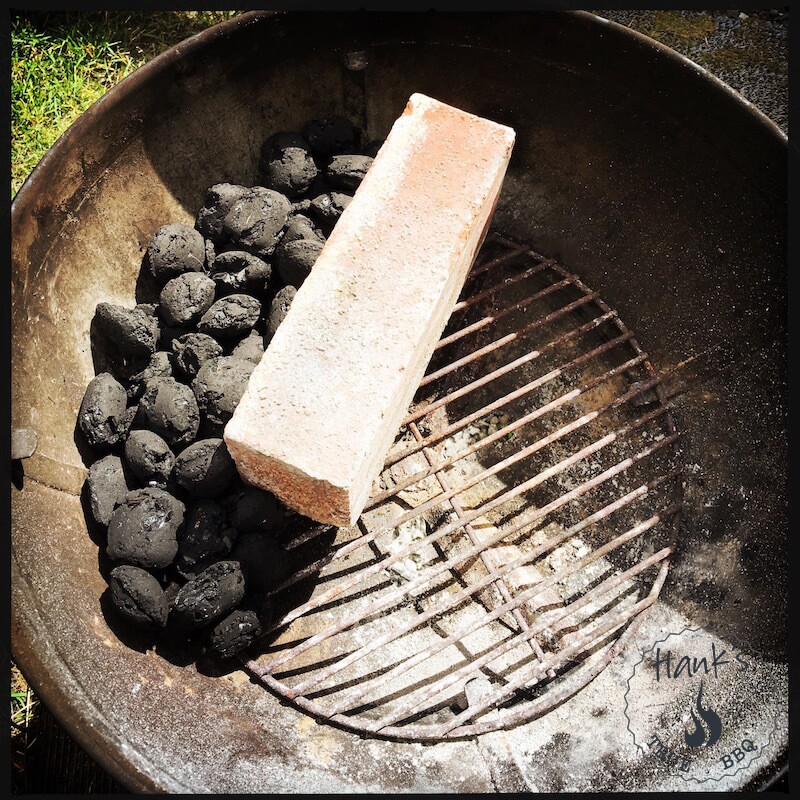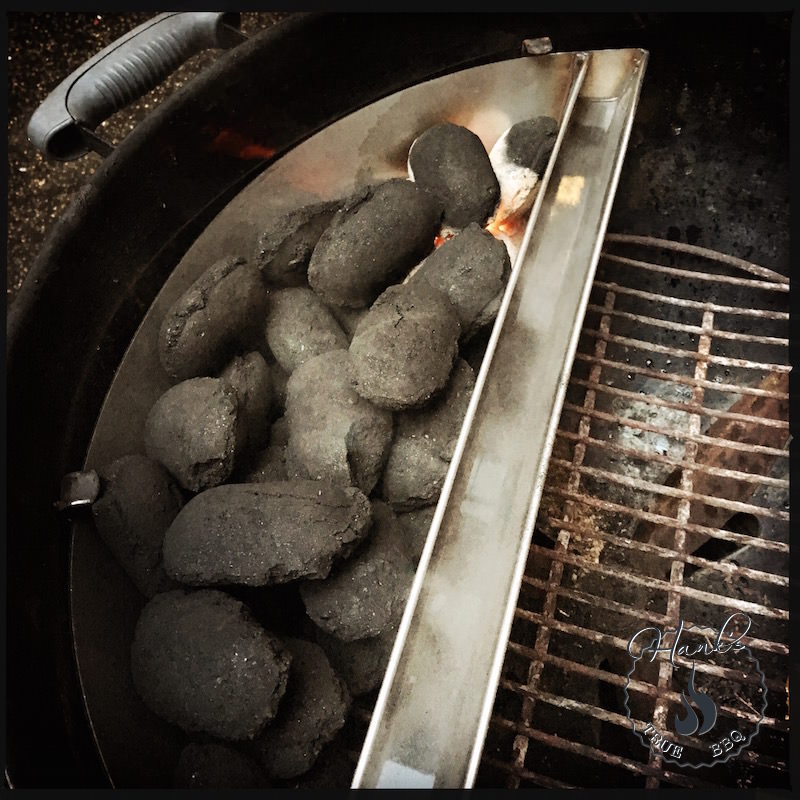A kettle grill is very a popular type of grill, and for a reason: it is very versatile. Add a bag of charcoal, light it up and start grilling in no time. Regardless of brand they all have the basic features: a lid, a bottom vent and a top vent.
So, what can you do with a kettle grill, besides the normal hot dog and burgers? Well, get to know how it works so you can run it at different temperatures, regardless of whether you’re doing an all day grill or shorter cooking sessions.
Charcoal placement
To run it at lower temperatures you can place the charcoal in different ways. The purpose is twofold:
- Run at lower temperatures
- Cook for 4-10 hours on one batch of charcoal/briquettes
There are a few different layouts you can use for that purpose: the snake method, or “half ‘n half”, or variations on it by using third party accessories like the Vortex and the Slow ‘N Sear.



Commercial products

Adjusting airflow for temperature control
All kettle grills have a bottom vent and a top vent. Use these to your advantage. The bottom vent regulates inflow of oxygen, and the top vent regulates the exhaust. To control temperature, you need to use both.
Normally the top vent is used for large variations in temperature. By adjusting the top vent you adjust the draft, which is key to controlling temp. However, all kettle grills leak air like a sieve, so on a kettle grill you will use both. I typically set the bottom vent to half-open, and do adjustments with the top vent. Using the snake method (mentioned above) I can swing the temperature between 230° and 360° F easily, adjusting the top vent only.

